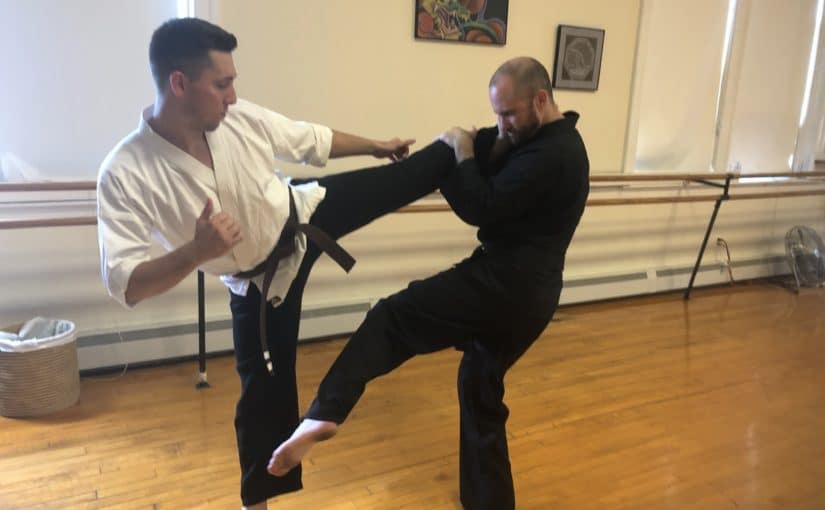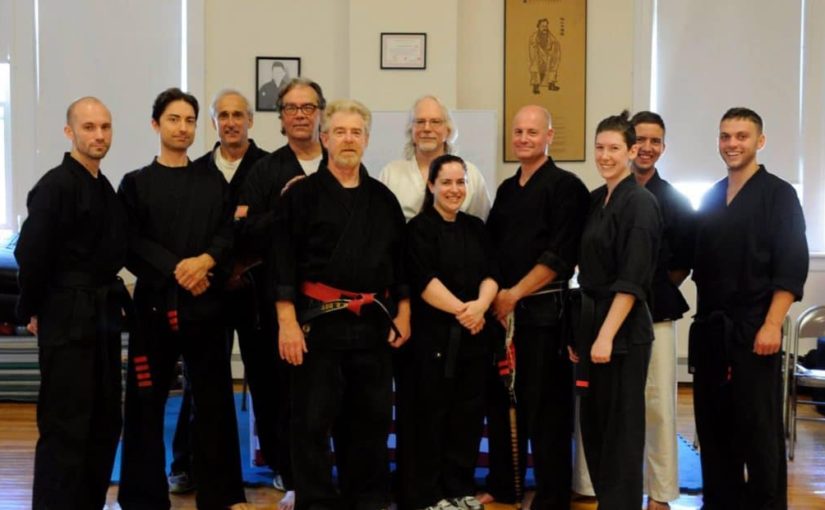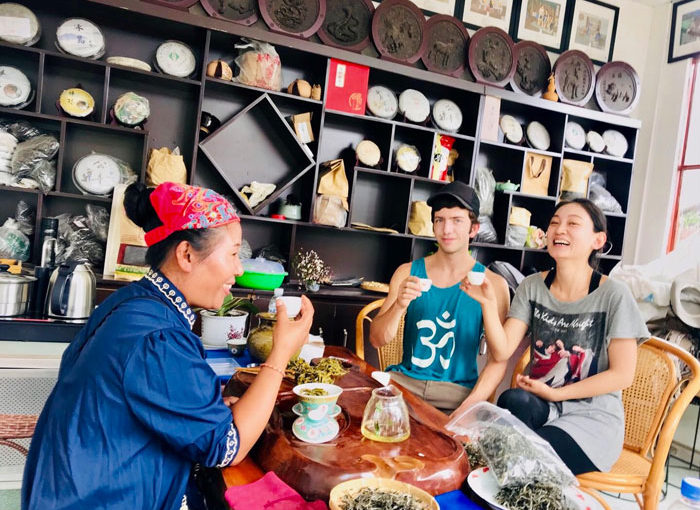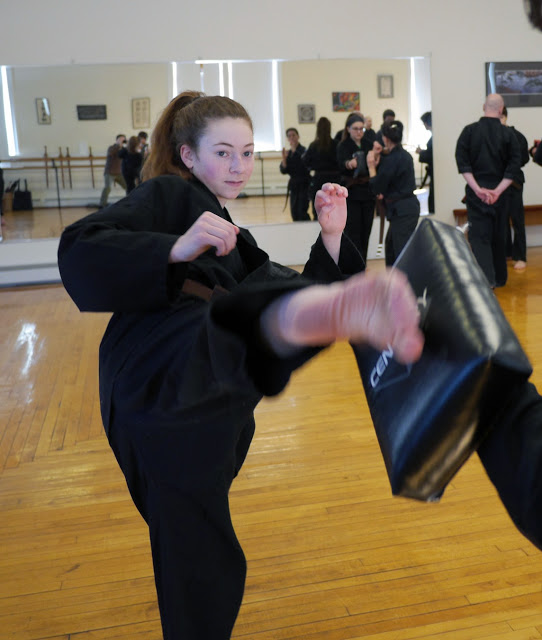
Blog
Taekwondo vs. Karate, Which Is Right For You?
Overview
Taekwondo and Karate are both East Asian martial arts now taught all around the world. Taekwondo comes from Korea and Karate comes from the Japanese island of Okinawa.
Since 2000, a form of Taekwondo sparring called Gyeorugi has been an Olympic event. Two Karate events, Kata and Kumite will be featured for the first time in the 2020 Olympics.
Both martial arts are offered by schools in Greenfield, Massachusetts.
Techniques & Style
Taekwondo and Karate are both considered hard or external styles of martial arts. This means that training has a heavy focus on physical conditioning, and in self-defense usage, responding to force with force.
Taekwondo emphasizes kicks more than hand techniques. Karate is the opposite. This distinction is clear when you look at tournaments of each. Taekwondo competitions give participants more points for a kick than a punch, whereas kicks and punches are scored equally in Karate matches.
This emphasis on kicks puts Taekwondo on the more tournament and performance side of martial arts. That having been said, Karate taught at J.R. Roy Martial Arts includes both performance style and sparring techniques. Students begin with basic kicks but to reach black belt must become proficient in flying, spinning, and jumping kicks, like those taught by Taekwondo schools.
Regarding self-defense applications, Karate teaches more hand techniques and throws than does Taewkondo. J.R. Roy’s Karate curriculum has a whole branch dedicated to self-defense techniques and drills. One must learn new techniques for each new rank and eventually master advanced joint locks and takedowns.
How to Decide?
Karate, Taekwondo, or any martial art will develop your strength, confidence, and discipline.
Both arts will teach you performance sequences called poomse in Taekwondo or kata in Karate. They also will teach you how to compete in their respective tournaments and how to respond in self defense situations.
Much more important than the martial art you choose are the teachers that guide your training and the peers that help you grow.
We suggest that you try any and every martial arts school available to you until you find a fit. Don’t limit yourself to the styles you heard were the coolest or most effective for fighting; stay open to new possibilities.
J.R. Roy Martial Arts School offers a complete martial arts system of Karate, Modern Arnis, Tai Chi, and Bagua Zhang. Whether you are interested in self defense, fitness, self mastery or spiritual development, we have a program for you.
Our school has classes most days and is open for you to come watch or even participate in a free trial class.
Check out our schedule here then contact us so we can help you find the best class for you.
Relevant Testimonial
I’ve done a few martial arts over 40 years, starting with Shotokan Karate in 1980. For several years I’ve attended J. R. Roy’s Modern Arnis, and sampled the studio’s other arts. In the late 1980s I attended one of the world’s top Taekwondo schools, the Jae Hun Kim Taekwon-do Institute, which has since grown to over 40 studios worldwide. I still enjoy Taekwondo kicks. The J. R. Roy Studio has taught me how much internal art and effective street techniques I lacked in my practice.
I could write a small book about all I’ve learned at J.R.Roy’s, but I’ll give just two examples. (1) The emphasis on proper alignment of the spine unleashes new vigor and a feeling of flow. (2) Taekwondo kicks have more power than Karate’s but at the cost of being vulnerable to punches, which are not allowed to the head in Taekwondo competitions but expect them on the street. Also, J.R.Roy’s kicks obey the principles of power more than I’ve seen in any other karate schools. Being in my early 60s, the sun is setting on my Taekwondo kicks, yet the complete and diverse internal and external styles offered at J.R.Roy’s will enable me to practice martial arts well into my old age.
~Rob Laporte
New Local Business Discount at J.R.Roy Martial Arts
The J.R.Roy Martial Arts Studio is proud to announce an all new discount for local businesses, in or near Greenfield, Massachusetts. With the goal of improving health and wellness in the local community, we would like to make the following offer.
2 employees that join any program for at least 6 months get a 15% discount on tuition. 3 or more employees that join for at least 6 months get a 20% discount on tuition.
The J.R.Roy Martial Arts Studio offers a wealth of martial arts programs including Karate, Modern Arnis, Tai Chi Chuan, and Qigong. Read more about our programs here.
Benefits to Employers
- Healthier employees work more efficiently and hold better attitudes towards their work.
- Fitness programs like those offered by JRRMAS strengthen the commitment employees have to their employer.
- Prepayments have tax advantages if completed before the end of the year.

Benefits to Employees
- Our instructors have decades of experience and can teach students at any level.
- Our programs offer varying levels of physical and mental challenges that stimulate growth and build confidence in our students.
- We offer night, morning, weekday, and weekend classes to fit different schedules.
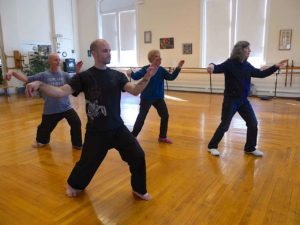
Please contact us with questions about this offer or any other inquiries.
Sifu Announces New 2018 Beginner’s Course and Changes to Tai Chi Program
J.R. Roy Martial Arts Studio is proud to announce a new, 4-week Tai Chi & Qigong Course for beginners. The course will begin on the first Wednesday of the month at 5:30-6:30pm. The next session will begin on Wednesday, November 7th, 2018 at 5:30pm. It continues every Wednesday 5:30-6:30pm and Saturday 8-9:30am.
This course will be offered with a 10% discount on regular tuition and free registration. This equals a total savings of $47.50 for a limited time only! Anyone interested in Tai Chi or Qigong would be wise to take advantage of this special offering. Email jrroymartialarts@gmail.com to pre-register now.
Also please note that regular Tai Chi classes on Tuesday and Thursday mornings from 8-9:30am are now Advanced Study Group classes. Attendance to these classes and the regular Bagua Zhang class on Thursday mornings from 7-8am requires permission from Master Roy.
Master Roy also offers private one on one instruction for students in any art and of any level. See more about private lessons here.
Sailor performing Seisan Kata
Old Photo of Cheng Man Ching

Perseverance is the most important thing about these practices….Oh, and it’s a cycle….Some days more, other days less. Sometimes it feels great, other time not so much. Don’t overthink….Just do!
Your welcome…..Sifu
Chinese Culture Course Announced for this Summer
J.R. Roy Martial Arts Studio is proud to announce this latest addition to the JRRMAS curriculum. Ashley Liu, who taught Chinese calligraphy here last winter, and Jack Fox, Karate and Arnis instructor, will teach this course.
Course Description
The course will consist of two classes. In the Gongfu Tea Ceremony class, students will learn the history, various production methods and techniques for making teas, and prepare samplings of various traditional teas using the Gongfu method. In the Chinese calligraphy class, students will begin by learning the basic strokes and materials of a calligraphy artist, followed by traditional characters and more advanced techniques. Students may attend just one or both of these classes.
Having sparked interest with the “Taste of Calligraphy” class last February, Ashley and Jack are excited to provide this course for students who want more complete instruction in this ancient art. Ashley teaches a Chinese calligraphy course every July to foreign students in Beijing, so her teaching and calligraphy skills will be fresh when she visits Western Mass at the end of the month.
Gongfu Tea Ceremony

The Gongfu Tea Ceremony part of the course will be a first for the studio. Although this may be Greenfield’s first taste of gongfu tea, it has a long history in the East. Since the Song dynasty (960-1279 AD), scholars and martial arts masters alike have used this method to stimulate their senses and as a study in itself. It’s time for Sifu’s daily cup of green tea to be brought to the next level.
Jack and Ashley spent time this spring with tea masters in Yunnan Province, China. There they studied the Gongfu Tea Ceremony and all about pu’er tea. The ethnic minorities who still inhabit this original tea producing region, and visiting tea masters taught and inspired them to share this knowledge. They made sure to bring back delicious and authentic tea as well.
Join us this summer to learn more about tea, calligraphy, and Chinese culture!
See the flyer for dates and prices here
Skyler C. Practicing her Round House Kick to a Focus Pad at a Recent Class
Sifu Roy’s Heading North…Soon!
New Smyrna Beach Tai Chi Associate Horace B.

Horace has been living and running the NSB beaches for 60 years! Guess how old he is? He is still running marathons and has run the Pike’s Peak marathon (what he calls the toughest race) TWICE!
We talked about the additional benefits that one gets from exercising on the beach…There’s many, from the softer surface to the breathing in of the ‘sea air’ to the overall energy of the ocean and becoming ‘one’ with nature.
Can you guess his age?
